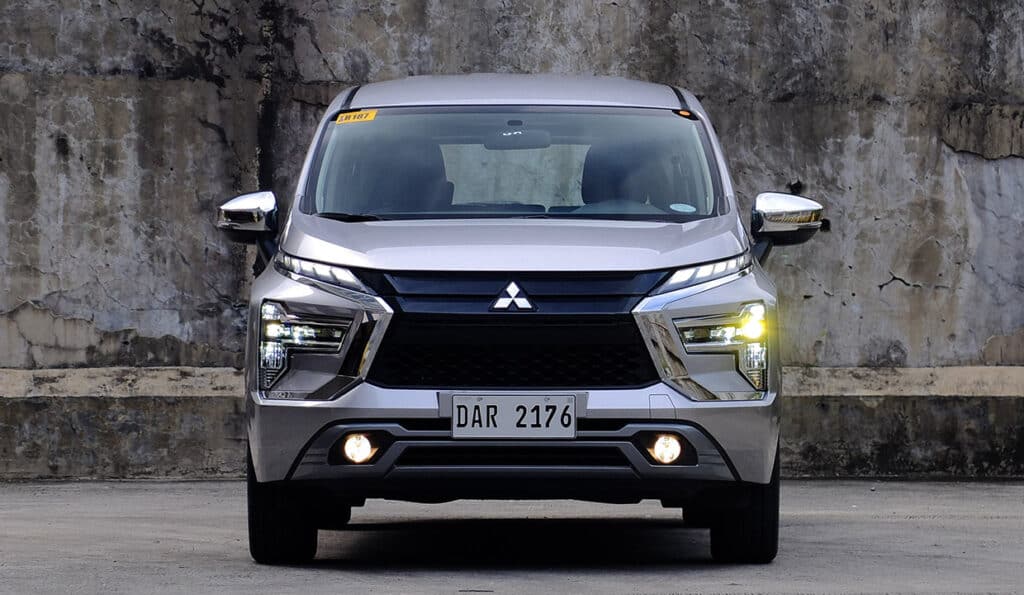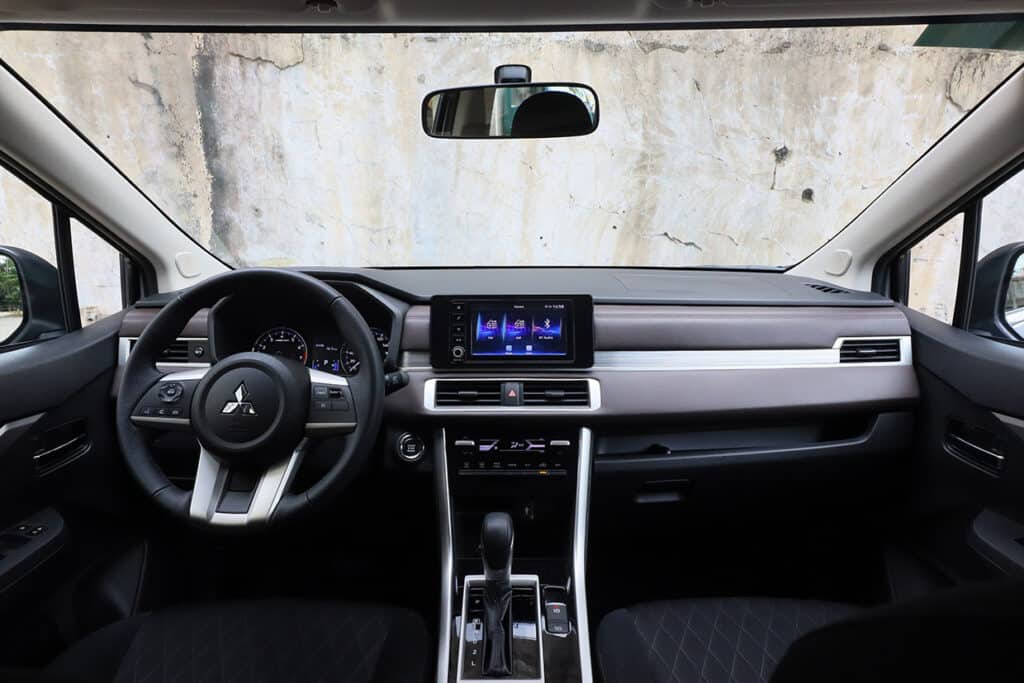Sometimes it’s good to be reminded of just how good a car is by giving it a go once more. In the case of the Mitsubishi Xpander, it’s the small MPV everyone’s become familiar with. This, of course, puts it in danger of being bred in contempt. Regardless, despite the newer offerings in the market, it still remains the segment’s benchmark.
The Xpander can’t be considered as the pioneer of the small MPV segment, but it’s the one that brought about its mainstream popularity. From a class of vehicles not known for providing frills or thrills, it managed to turn that on its head. Simply put, it made this segment classy. Driving one need not be done with a paper bag over your head. It was stylish, well-featured, and flexible. Naturally, Mitsubishi was rewarded with the Xpander becoming the country’s bestselling MPV, beating even the Toyota Innova.
Fast forward to 2022, and Mitsubishi’s rivals started to take notice. As the oldest one in its class, the Xpander was in a vulnerable position. Still, a timely refresh managed to turn back time.

Depending on who you ask, the Xpander either looks head-turning or fussy. Personally, it’s a bit of both. No one will call the Gundam-inspired front end gorgeous, but it does give it flair. You have to tip your hat to Mitsubishi designers who stuck to their guns with this entire Dynamic Shield concept. For 2022, it’s been emphasized even more, and together with the T-shaped LED headlights, gives it an unmistakable, almost shouty presence; a rarity in the MPV segment. Over to the rest of the car, it’s all about tidying everything up. Compared to the shocking front end, everything else is quite subdued. The side sills are better integrated now, while the tailgate and rear bumpers have been cleaned up nicely.
Polarizing as the Xpander’s exterior design is, inside, there’s no question which direction designers wanted to go. Basically, they ripped out the old dashboard and replaced it with one that’s visually more upscale. Mitsubishi calls the motif, “Horizontal Axis,” but you can also call it a winner. Not only does it look more modern than ever, but it also brings over nicer, more tactile materials. Previously, soft-padded surfaces are absent in this segment, but here, you’ll find it immediately in that brown dash topper. Not only that, but see that silver trim on the dash? It’s actually nicely textured too.

The Xpander goes from strength to strength with a first-rate driving environment. The dash redesign gives birth to a new three-spoke steering wheel. With a thick, meaty rim, it’s something you’ll expect in a sporty car and not a practical MPV. Then, there are the new gauges with the full-colored multi-info display and the highly legible Mitsubishi font; something echoed in the new 7-inch infotainment system. The climate control isn’t fully automated, but the large buttons and toggle switches make them easy to operate. Then, there are the seats. It’s not covered in leather, but the fabric used is of extremely high quality that cowhide isn’t missed.
The Xpander now comes with what Mitsubishi calls, “Smart Phone Link Display Audio.” It’s a mouthful, but what’s important is that it comes with support for both Apple CarPlay and Android Auto straight out of the box. The interface may look ancient, but at least it’s easy to use and navigate. Functions, including system-related settings are no more than two submenus deep. Sadly, the setup isn’t perfect. If there’s one thing that could be improved here, it’s the audio quality.
One of the new mechanical highlights to the refreshed Xpander is the boosted ride height. Thanks to the taller tires (205/55R17) and a re-worked suspension, it now stands with a 225mm ground clearance. Not only does this make it the best in the small MPV segment, but it can easily put most crossovers to shame. Of course, this doesn’t automatically transform it into an off-roader. If anything, it merely provides some extra protection against supermarket parking lot curbs and of course, flash floods.
Surprisingly, this suspension rework has only slightly altered the ride and handling mix. Keeping its tire pressure at the recommended 33 psi, it loses some of its pliancy over low-speed, low-frequency bumps. On the flip side, it gains better bump absorption over large cracks and potholes. It also doesn’t bottom out as much even when fully loaded. Handling-wise, the Xpander turns on a dime (5.2-meter turning radius), and there’s not much body roll even when pushed. That said, the steering could use a recalibration. Here, it’s simply too light that you’ll find it fidgety, especially on the highway. It tends to wander about and this requires small steering corrections just for it to track straight. In terms of braking power, it continues with its front vented disc/rear drum setup. But for the update, it gains an electric parking brake with auto hold which is smart enough to engage whenever the gearlever’s shifted to park.
As for grunt, the Xpander keeps its 1.5-liter 4A91 engine and 4-speed automatic combo. At city speeds, the outputs are entirely adequate, but mind you, it will lose pace quickly whenever the speeds or passenger count goes up. In addition, because there’s more rotational mass to overcome thanks to the larger tires and heavier mass (up by 20 kgs), it doesn’t get off the line as quickly as before. When it does get moving though, it’s alright. Sadly, this has affected the fuel economy, dropping to 8.3 km/L from 9.9 km/L before at the same sort of average speeds. Still, when fueled up, its 45-liter tank can go the distance—up to 373 kilometers. Not bad.
Apart from getting less kilometers per liter of gas, the Xpander also loses out when it comes to safety. When it was launched in 2018, it wasn’t able to net a 5-star ASEAN NCAP safety rating due to the lack of side-impact airbags. Four years on, Mitsubishi still didn’t manage to correct this shortcoming by opting to keep the same safety gear as before. With dual SRS airbags, ABS with EBD, brake assist (standard only on the GLS) and traction control with hill start assist, it’s solid but not outstanding. It also lacks parking sensors of any kind, though the rear camera does have clear, concise guidelines.
After all’s said and done, the Mitsubishi Xpander still manages to stand out for its unique sense of style while also delivering the best driving experience in the small MPV segment. Despite its shortcomings when it comes to fuel efficiency and safety equipment, it counters that by continuing to offer a highly flexible, practical interior space that’s now backed up by a sense of upscale premium-ness typically absent in this class of vehicles. People were quick to balk at the refreshed Xpander’s P 1.180-million, but in the end, every peso has been accounted for. The price is perfectly justified in this case, and all it takes is a drive to remind you of that.

